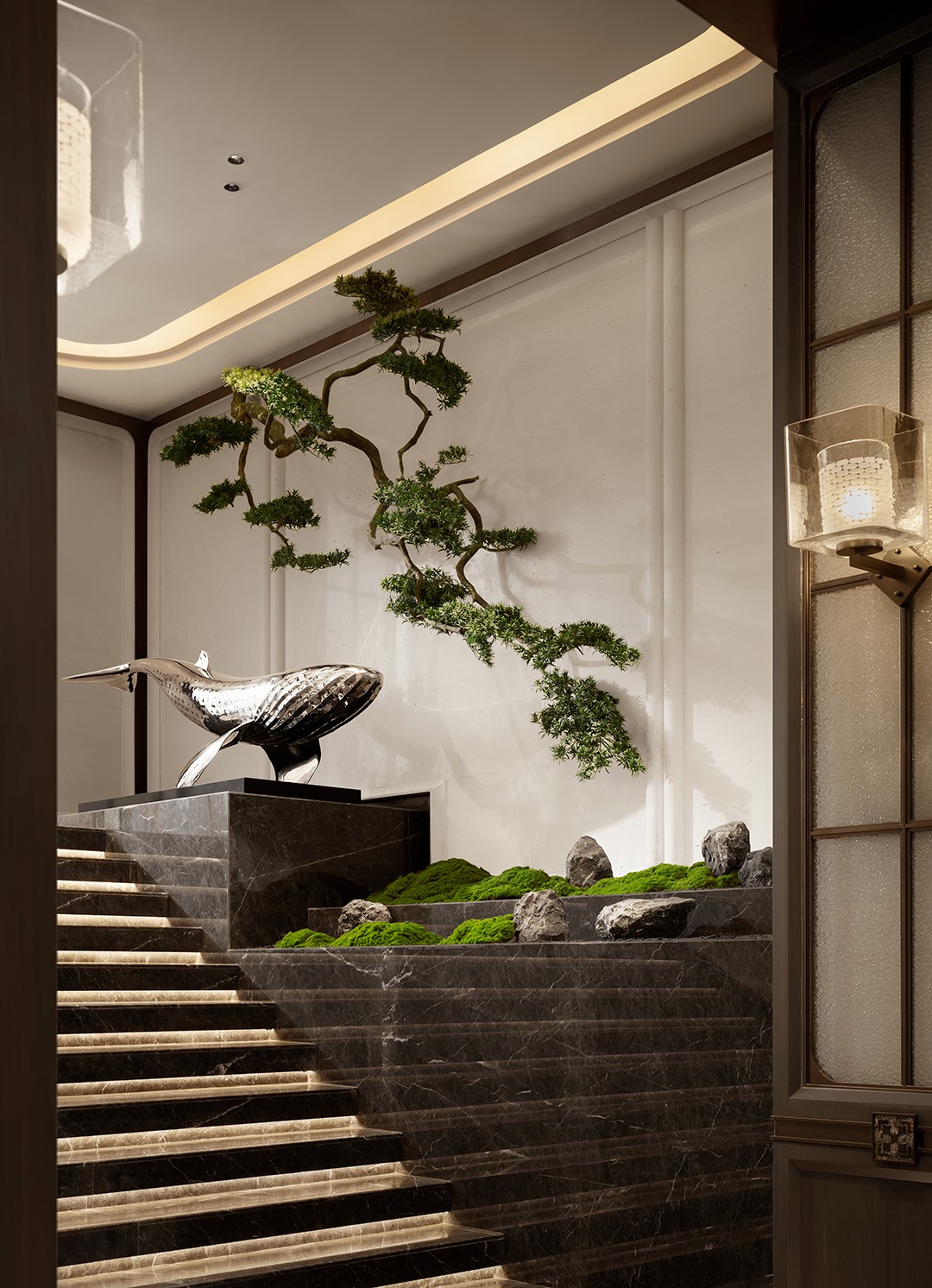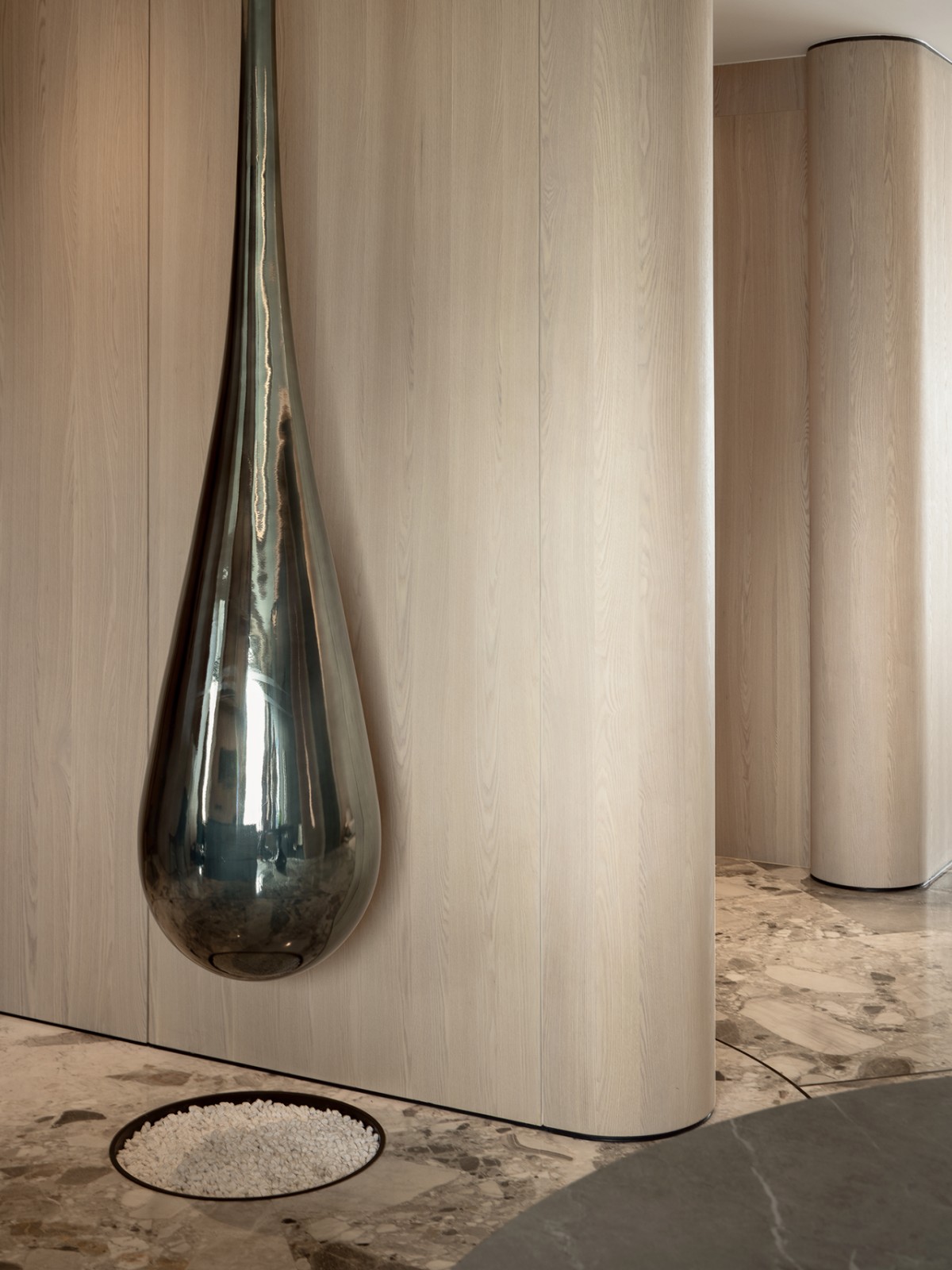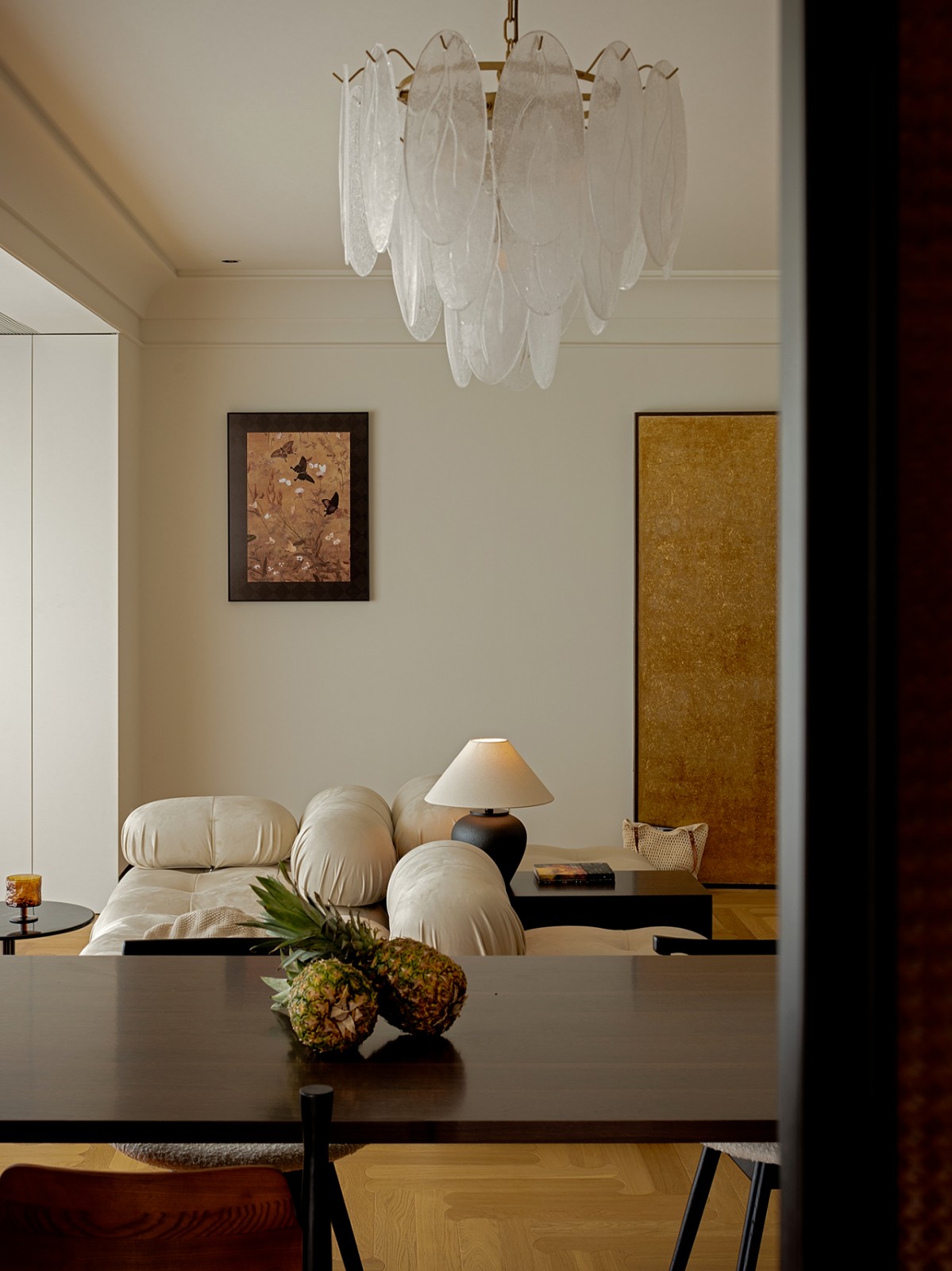ZLA Building Estudio BaBO
2016-12-21 15:00
© Javier Agustín Rojas
c.哈维尔·奥古斯丁·罗哈斯


架构师提供的文本描述。该项目位于阿根廷布宜诺斯艾利斯市附近Colegiales的两堵空白墙之间。该请求包括8套公寓。这一特别地段的建筑规范R2B1,位于一个地区的特点是低居住密度和突出的邻里特征。
Text description provided by the architects. This Project is located between two blank walls in Colegiales, a neighbourhood of the City of Buenos Aires, Argentina. The request consists in 8 apartments. This particular lot presents the building code R2B1, and is located in an area characterized by a low residential density and a distinguished neighbourhood character.
Axonometric


为了尊重眼前的城市轮廓,我们决定给出空间来预测人行道上一棵现存的林丹树的生长,就在建筑物的正前方。为了做到这一点,我把主立面从市政线路向后移了两米,产生了一个私人通道中庭,将公共空间延伸到建筑物的私人入口。
To respect the urban profile of the immediate context, we decided to give space in prediction of the growth of an existing linden tree on the sidewalk, right in front of the building. To do so, me moved the main facade two meters back from the municipal line, generating a private access atrium, extending the public space into the private acces of the building.
© Javier Agustín Rojas
c.哈维尔·奥古斯丁·罗哈斯


房屋数量已被取消,以便在一楼免费供出入大厅、公共空间和停车场使用。从一楼开始,这座建筑是由一个中央庭院隔开的两个街区构成的。
The housing volumes have been lifted to leave the ground floor free for the access hall, common spaces and parking lot. Starting from the first floor the building is structured in two blocks separated by a central courtyard.
在这一外层空间的一边是循环,无论是垂直的(电梯和楼梯)和共同的水平通道,以进入每一个公寓。
On one side of this outer space are the circulations, both the vertical (elevator and staircase) and the common horizontal walkway to access each apartment.
© Javier Agustín Rojas
c.哈维尔·奥古斯丁·罗哈斯


Floor Plans
平面图


© Javier Agustín Rojas
c.哈维尔·奥古斯丁·罗哈斯


中央露台的尺寸确保了单元的正确照明以及它们之间必要的隐私。
The dimensions of the central patio ensure the correct illumination of the units and the necessary privacy between them as well.
正是在这种空洞的表达中,重读代码才能在空间层面上提供有趣的资源:侧廊是通过建造的卷提供的,避免了尖顶的立面/前阳台。
It’s in this articulation of the voids that the rereading of the code allows interesting resources at the spatial level: lateral galleries are offered through the constructed volumes, avoiding the tipical façade/front balconys.
这允许扩大扩展和产生一个新的第三内墙,以保证最佳的照明和扩大视觉和环境的客厅空间。
This allows to enlarge the expansions and to generate a new third interior facade that guarantees an optimal illumination and enlarges visually and environmentally the space of the living-room.
它还指的是,在类型学层面,旁边的露台与现存的和界定的“卡萨-合唱”墙相对,这在邻里非常普遍。
It also refers, at the typological level, to the side patios against existing and defining walls of the "casa-chorizo", very common in the neighbourhood.
© Javier Agustín Rojas
c.哈维尔·奥古斯丁·罗哈斯


这座建筑由8套公寓组成,按类型划分为两卷,一套给前面,每层有一套两房的公寓,后面的一间则有三套房。
The building consists of 8 Apartments that are distributed by typology in the two main volumes, one that gives to the front that contains a two-roomed apartment each floor, and the one in the back has three-roomed apartment instead.
所有的房子都是以同样的方式连接起来的:一边是卧室和浴室,另一边是一个开放的区域,里面有起居室和厨房,最后是通过外部露台的扩展,这是起居室的外部半覆盖的扩展。
All the houses are articulated in the same way: bedrooms and bathrooms on one side, on the other one, an open area with living / dining room and kitchen and finally the expansion through outer terraces, that function as the exterior half-covered expansion of the living areas.
这种扩展产生了更大的视觉振幅,改善了输入-输出关系,并提供了更大的照明和自然通风。
This expansion generates a greater visual amplitude, improves the in–out relation and provides greater lighting and natural ventilation.
© Javier Agustín Rojas
c.哈维尔·奥古斯丁·罗哈斯








































Architects Estudio BaBO
Location Buenos Aires, Argentina
Category Apartments
Design Team Francisco Kocourek, Francesc Planas Penadés, Marit Haugen Stabell
Area 811.0 m2
Project Year 2015
Photographs Javier Agustín Rojas































